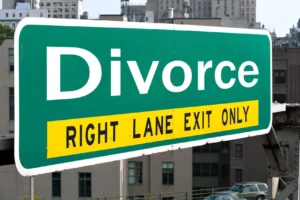Juvenile Crime: Legal Options for Young Offenders
Juvenile crime remains a complex and challenging issue within the American legal system, requiring a delicate balance between accountability and rehabilitation. Understanding the legal options available for young offenders is crucial for families, legal professionals, and society at large. This guide explores the various aspects of juvenile crime, from the initial stages of the legal process to potential consequences and rehabilitation strategies.
The juvenile justice system operates on the principle that young offenders have a greater capacity for rehabilitation than adults. As such, the system aims to provide interventions that address the root causes of criminal behavior while still holding youth accountable for their actions. However, the specific legal options and processes can vary significantly depending on the nature of the offense, the age of the offender, and the jurisdiction in which the crime occurred.
One of the first considerations in a juvenile crime case is whether the offense will be handled within the juvenile court system or transferred to adult court. This decision, known as juvenile waiver, can have profound implications for the young offender’s future. Factors that influence this decision include the severity of the crime, the juvenile’s age and criminal history, and the perceived likelihood of rehabilitation within the juvenile system.
For cases that remain within the juvenile court system, there are several legal options and processes that may come into play. The intake process is typically the first step, where a juvenile probation officer or court official reviews the case to determine whether formal court proceedings are necessary. In some instances, cases may be diverted at this stage through informal probation or other alternative programs.
Diversion programs have gained popularity as an effective way to address juvenile crime without resorting to formal court proceedings. These programs can include community service, counseling, educational interventions, or restorative justice initiatives. The goal is to hold the young offender accountable while providing support and resources to prevent future criminal behavior. Successful completion of a diversion program can often result in the charges being dismissed or reduced.
For cases that proceed to formal court proceedings, the process typically includes an adjudication hearing, which is similar to a trial in adult court. However, juvenile proceedings are generally less formal and more focused on rehabilitation than punishment. If the juvenile is found to have committed the offense (the term “guilty” is not typically used in juvenile court), the case moves to the disposition phase, where the court determines the appropriate consequences and interventions.
Juvenile probation is a common disposition for many young offenders. This option allows the juvenile to remain in the community under supervision, often with conditions such as regular check-ins with a probation officer, attendance at school or work, participation in counseling or treatment programs, and adherence to a curfew. Probation can be an effective tool for rehabilitation, providing structure and support while allowing the young person to maintain ties with family and community.
In more serious cases, or when community-based interventions have proven ineffective, the court may consider residential placement. This can range from short-term detention facilities to long-term secure facilities or specialized treatment centers. The goal of residential placement is to provide a structured environment for rehabilitation while ensuring public safety. However, the use of detention and incarceration for juveniles has come under scrutiny in recent years, with many experts advocating for community-based alternatives whenever possible.
One emerging trend in juvenile justice is the use of evidence-based practices to inform decision-making and interventions. These practices are supported by scientific research and have been shown to be effective in reducing recidivism and promoting positive outcomes for young offenders. Examples include cognitive-behavioral therapy, family-based interventions, and skill-building programs that address specific risk factors for criminal behavior.
The role of mental health in juvenile crime has gained increased attention in recent years. Many young offenders struggle with undiagnosed or untreated mental health issues, which can contribute to criminal behavior. As a result, many jurisdictions have implemented specialized mental health courts or programs within the juvenile justice system. These initiatives aim to provide comprehensive mental health assessments and treatment as part of the rehabilitation process.
Another important consideration in juvenile crime cases is the potential long-term consequences of a criminal record. While juvenile records are generally sealed or expunged when the individual reaches adulthood, there are exceptions, particularly for serious offenses. Understanding the options for record sealing or expungement is crucial for young offenders and their families, as a juvenile record can impact future educational and employment opportunities.
The concept of restorative justice has gained traction in many juvenile justice systems. This approach focuses on repairing the harm caused by the criminal act, often through direct interaction between the offender and the victim. Restorative justice programs can include victim-offender mediation, family group conferencing, or community reparation projects. These initiatives aim to promote accountability, empathy, and healing for all parties involved.
Substance abuse is often a contributing factor in juvenile crime cases. Many jurisdictions have implemented specialized drug courts or programs within the juvenile justice system to address this issue. These programs typically combine intensive supervision with substance abuse treatment and support services. The goal is to address the underlying addiction issues that may be driving criminal behavior while providing the young person with the tools and support needed for recovery.
Education plays a crucial role in juvenile rehabilitation and crime prevention. Many young offenders struggle with academic challenges or have disengaged from the educational system. Alternative education programs within the juvenile justice system aim to re-engage these youth in learning, providing specialized instruction and support to help them catch up academically and develop the skills needed for future success.
The role of family involvement in juvenile justice has gained increased recognition in recent years. Many jurisdictions now offer family-based interventions as part of their juvenile justice programs. These initiatives recognize that addressing family dynamics, improving communication, and providing support to parents or guardians can be crucial in promoting positive outcomes for young offenders.
Gang involvement is a significant concern in many juvenile crime cases. Addressing gang-related offenses often requires specialized interventions that go beyond traditional juvenile justice approaches. Some jurisdictions have implemented gang prevention and intervention programs within their juvenile justice systems, aiming to provide alternatives to gang involvement and support youth in leaving gang life.
The intersection of juvenile justice and child welfare systems is an area of growing concern and focus. Many young offenders have histories of abuse, neglect, or involvement with the child welfare system. Recognizing these connections, some jurisdictions have implemented crossover youth programs or dual-status youth initiatives to provide coordinated services and support across both systems.
Racial and ethnic disparities within the juvenile justice system remain a significant challenge. Many jurisdictions are implementing initiatives to address these disparities, such as cultural competency training for staff, community-based alternatives to detention that are accessible to all youth, and data-driven approaches to identify and address points of disparity within the system.
The use of risk assessment tools in juvenile justice decision-making has become increasingly common. These tools aim to provide objective, evidence-based information about a young person’s risk of reoffending and their specific needs for intervention. While these assessments can be valuable in guiding decisions about placement and services, their use has also raised concerns about potential bias and the need for individualized consideration of each case.
Trauma-informed care has emerged as a crucial approach in juvenile justice. Recognizing that many young offenders have experienced significant trauma in their lives, this approach aims to create environments and interventions that are sensitive to these experiences and promote healing. Trauma-informed practices can include specialized screening and assessment, trauma-focused therapies, and training for staff on recognizing and responding to the effects of trauma.
The role of technology in juvenile crime and justice is an evolving area of concern and opportunity. While technology can be a factor in some types of juvenile offenses, such as cyberbullying or online exploitation, it also offers potential tools for rehabilitation and supervision. Some jurisdictions are exploring the use of mobile apps for probation check-ins, online educational programs for detained youth, or virtual reality applications for skill-building and therapy.
Juvenile sex offenses present unique challenges within the juvenile justice system. These cases often require specialized assessment and treatment approaches, as well as careful consideration of public safety concerns and the potential for rehabilitation. Many jurisdictions have implemented specialized programs or courts to handle juvenile sex offense cases, aiming to provide appropriate interventions while avoiding the potentially harmful effects of registering youth as sex offenders.
The transition from juvenile to adult court jurisdiction, often referred to as aging out, is a critical period for many young offenders. Some jurisdictions have implemented extended jurisdiction programs or young adult courts to provide continued support and supervision for individuals who age out of the juvenile system but may still benefit from youth-focused interventions.
Reentry programs play a crucial role in supporting young offenders as they transition back to their communities after detention or residential placement. These programs can include educational and vocational support, mental health and substance abuse treatment, housing assistance, and mentoring. Effective reentry support is crucial in reducing recidivism and promoting positive outcomes for youth involved in the juvenile justice system.
The role of victim rights within the juvenile justice system is an area of ongoing development and debate. While the primary focus of juvenile justice is on rehabilitating the young offender, there is growing recognition of the need to address the rights and needs of victims as well. Some jurisdictions have implemented victim-centered practices within their juvenile courts, such as allowing victim impact statements or providing opportunities for victim-offender mediation.
Prevention programs play a crucial role in addressing juvenile crime before it occurs. Many jurisdictions are investing in early intervention initiatives targeting at-risk youth, such as mentoring programs, after-school activities, and family support services. These prevention efforts aim to address risk factors for juvenile delinquency and promote positive youth development.
The use of solitary confinement or isolation in juvenile detention facilities has come under intense scrutiny in recent years. Many experts argue that this practice can be particularly harmful to developing adolescents and may exacerbate mental health issues. As a result, many jurisdictions have implemented policies to limit or eliminate the use of solitary confinement for juveniles, focusing instead on alternative behavior management strategies.
School-to-prison pipeline is a term used to describe policies and practices that push students out of schools and into the juvenile and criminal justice systems. Addressing this issue often involves collaboration between education and juvenile justice systems, implementing restorative practices in schools, and providing alternatives to suspension and expulsion.
The impact of adverse childhood experiences (ACEs) on juvenile delinquency is an area of growing research and intervention. Recognizing the link between early trauma and later behavioral issues, many juvenile justice programs now incorporate ACE screening and trauma-informed interventions as part of their approach to rehabilitation.
LGBTQ+ youth face unique challenges within the juvenile justice system, including higher rates of harassment, discrimination, and placement in restrictive settings. Some jurisdictions have implemented specialized training and policies to address the needs of LGBTQ+ youth in the juvenile justice system, aiming to provide safe and supportive environments for all young people.
In conclusion, addressing juvenile crime requires a multifaceted approach that balances accountability with rehabilitation and recognizes the unique developmental needs of young offenders. By understanding the various legal options and emerging trends in juvenile justice, we can work towards a system that effectively reduces recidivism, promotes positive youth development, and ensures public safety. As research continues to inform best practices in juvenile justice, it’s crucial for policymakers, legal professionals, and community stakeholders to remain engaged in ongoing efforts to improve outcomes for youth involved in the justice system.
Sources:
- https://www.justice.gov/crt/rights-juveniles
- https://www.geneognibeneassociates.com/criminal-law-basics/juvenile-conviction-consequences/
- https://www.treyzlaw.com/common-defenses-to-juvenile-crime/
- https://www.kob.com/news/missing-pieces-juvenile-crime-trends-4-investigates/
- https://stateline.org/2024/05/31/greater-focus-on-crime-sparks-another-wave-of-juvenile-justice-bills/
- https://bfplawfirm.com/consequences-of-a-juvenile-offense/
- https://sgp.fas.org/crs/misc/RL30822.pdf
- https://carlchapmanlaw.com/juvenile-defense-strategies/




















